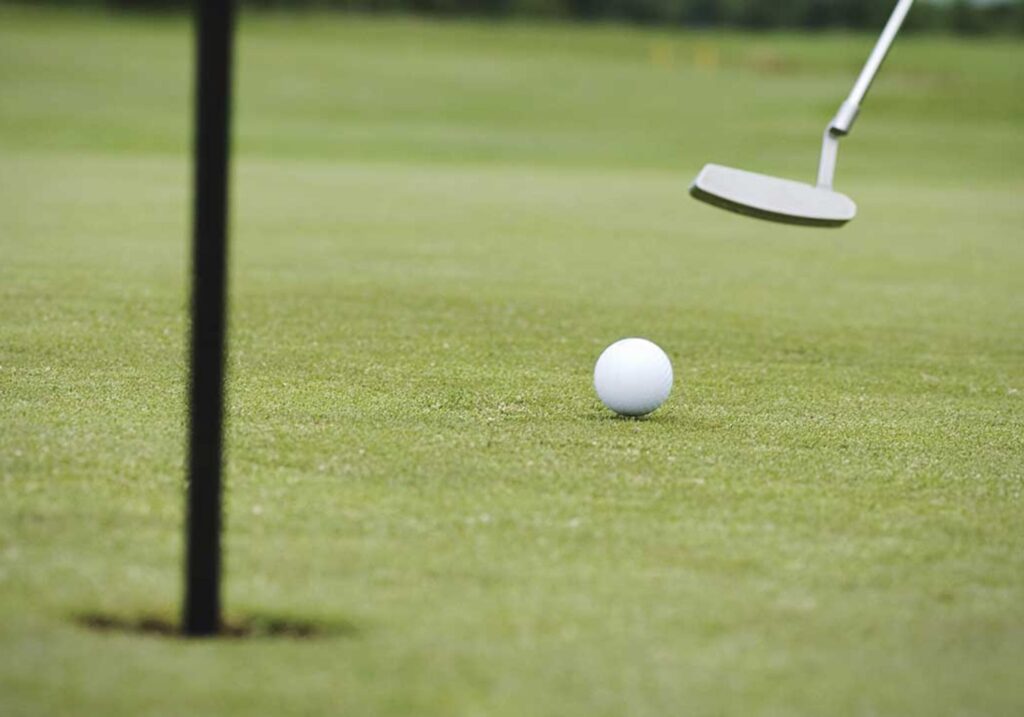There’s no worse feeling than hitting a great approach shot, walking up to a short putt, and watching it slide past the hole. Short putts — three to six feet — can make or break a round. And while they might seem simple, they’re often where many of us struggle the most.
The good news? You don’t need a Tour-level stroke to sink more short putts. You just need a few smart techniques, a solid routine, and some purposeful practice.
Here’s how to turn those knee-knockers into tap-ins — and lower your scores in the process.
Get Your Setup Locked In
Before you even take the putter back, a good setup is half the battle. The key is consistency — your stroke can’t be reliable if your posture and alignment change every time.
Here’s a checklist to dial in your setup:
- Feet shoulder-width apart
- Ball slightly forward of center in your stance
- Eyes directly over the ball (use a mirror or drop a ball from your eye to test)
- Arms relaxed, hanging naturally
- Light grip pressure — like you’re holding a tube of toothpaste
The goal is to feel comfortable and balanced over the ball. If you’re reaching or hunched, it’ll show up in your stroke.
Focus on a Square Club Face at Impact

Most missed short putts don’t come from a bad read or speed — they come from an open or closed putter face at impact. If your face isn’t square when you make contact, the ball starts off-line.
To fix this:
- Practice hitting putts with a coin or ruler on the ground to check your face alignment.
- Try the gate drill: Place two tees just wider than your ball and try to roll the ball cleanly through. If your face is off, you’ll know right away.
- Focus on keeping your wrists quiet and using your shoulders to rock the putter back and through.
Keep Your Head (and Lower Body) Still
Short putts are all about control. Any extra movement — especially in your head or legs — can throw off your line.
One of the best putting tips? Keep your head down and your body still through impact. Don’t peek. Listen for the ball to drop instead of watching it.
To train this:
- Use the “one-two” drill. Say “one” on the backswing, “two” on the follow-through. Don’t look up until you finish saying “two.”
- You can also put a coin on the back of your neck or a hat brim — if it falls off, you’re moving too much.
Build a Simple, Repeatable Routine
Confidence on short putts starts with consistency. Pros don’t just walk up and hit it — they follow the same steps every time. You should too.
Here’s an easy three-step pre-putt routine:
- Pick your line and commit to it
- Take one or two practice strokes while looking at the hole
- Step in, align the putter face, then your feet, and go
Keep it quick. Keep it simple. Overthinking is the enemy of short putting.
Practice Putting with Pressure

Draining short putts on the practice green is one thing. Doing it when there’s money on the line or a crowd watching is something else entirely.
That’s why you need to simulate pressure in your practice. Try these:
- The 3-6-9 drill: Make a putt from 3 feet, then 6 feet, then 9 feet — if you miss, start over.
- The “100 in a row” drill: Try to make 10 three-footers in a row. If you miss, start again. Adjust the number to your skill level.
- Gamify it: Challenge a friend to see who can make the most in a row. Add a reward or consequence to raise the stakes.
The more you practice short putts under pressure, the more comfortable you’ll be when it counts.
Don’t Obsess Over the Break — Focus on Speed
On short putts, the break is minimal — but speed still matters. A putt hit too hard won’t hold the line. One left short never had a chance.
Instead of obsessing over the read, focus on rolling the ball with consistent pace. Try to have your putts finish 12–18 inches past the hole if they miss.
A good tip: Putt like the hole is a small circle behind the cup, not the front edge. This helps encourage confident strokes.
Putt Like a Pro
Sinking more short putts isn’t about buying a new putter or reinventing your stroke. It’s about fundamentals: clean setup, square face, quiet body, and a repeatable routine. Add a little pressure practice, and you’ll be holing more three-footers in no time.
Start working these tips into your next practice session — and get ready to walk off the green feeling a whole lot better about your scorecard.
